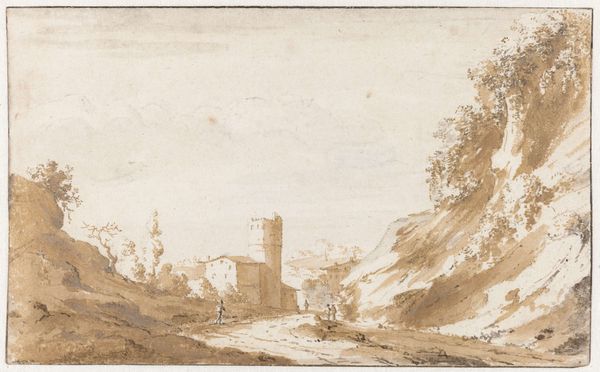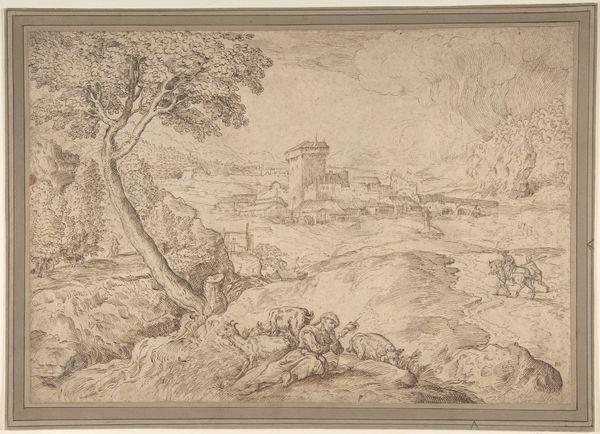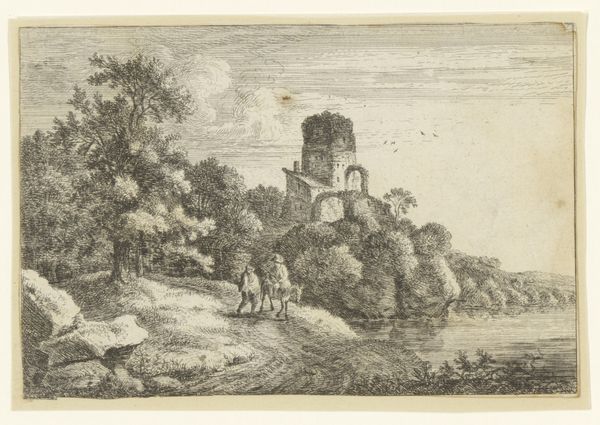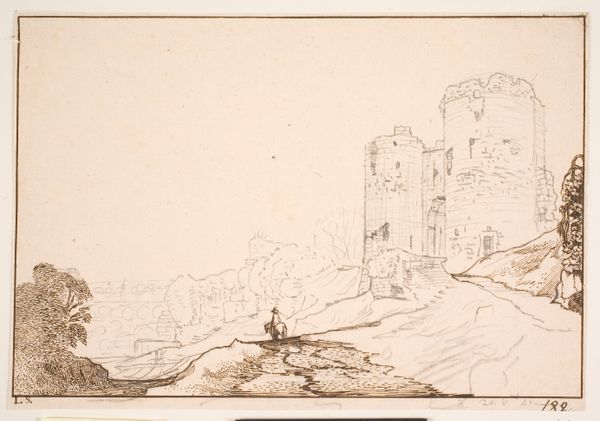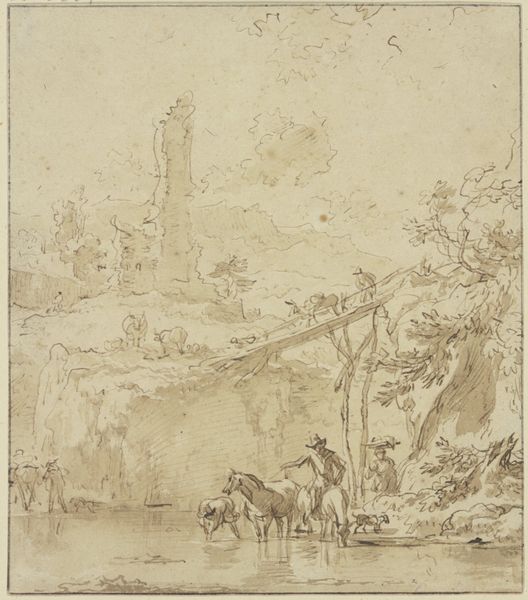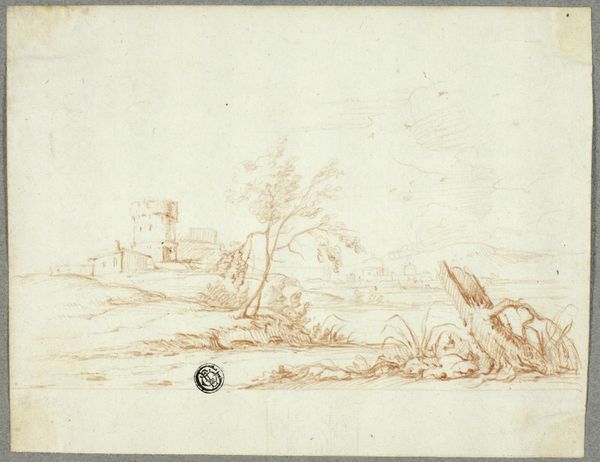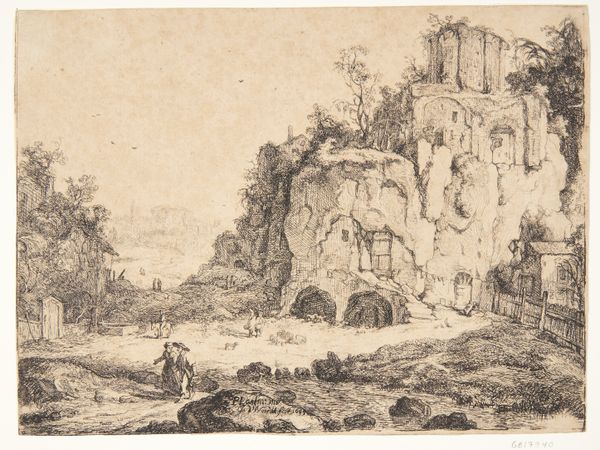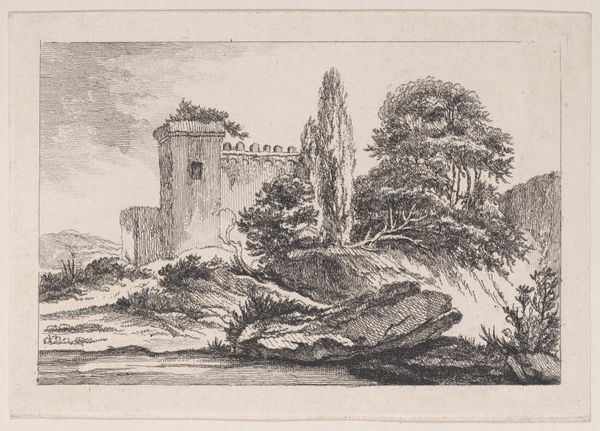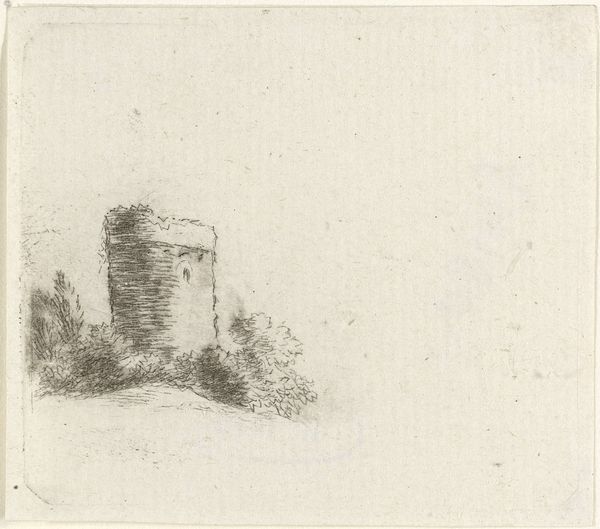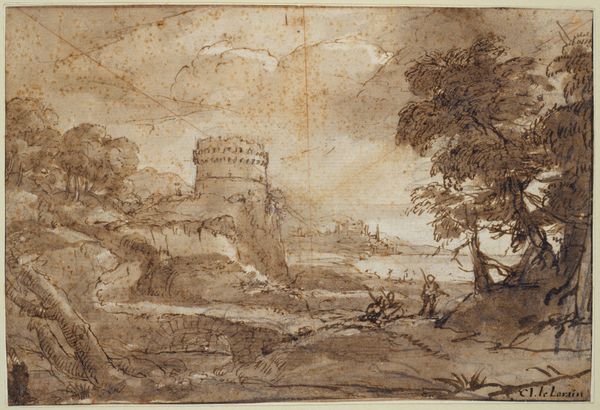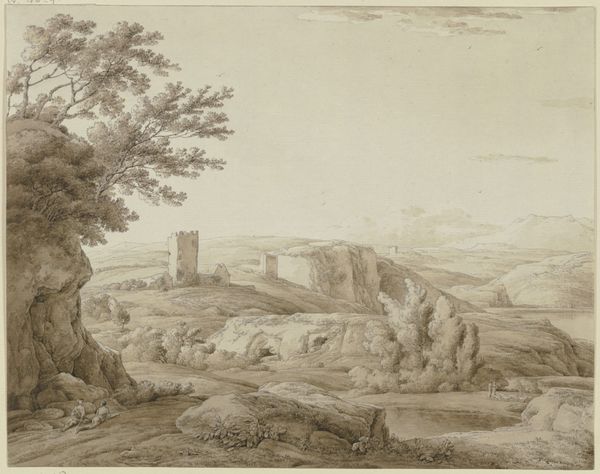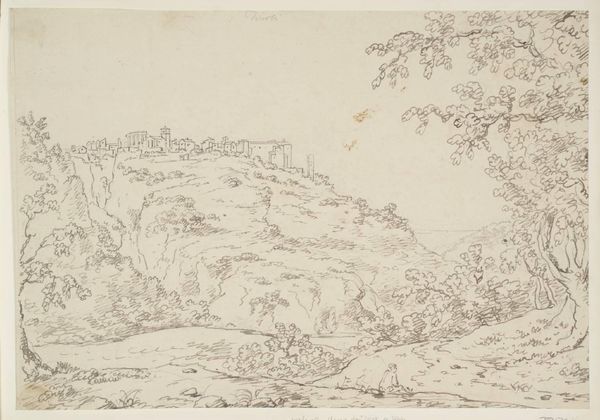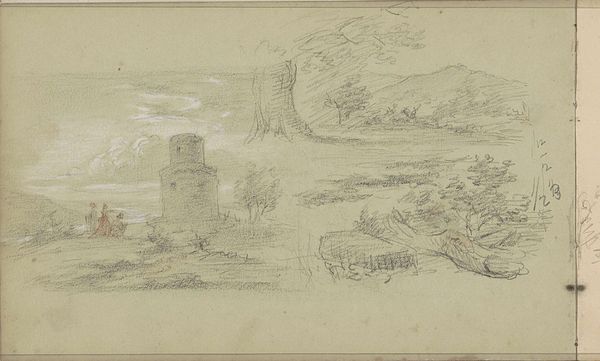
drawing, print, etching, ink
#
drawing
#
baroque
# print
#
etching
#
landscape
#
etching
#
ink
Dimensions: 9-5/8 x 12-1/2 in. (24.4 x 31.8 cm)
Copyright: Public Domain
Curator: This etching, created anonymously sometime between 1600 and 1700, is entitled "Landscape with Cylindrical Tower." The scene rendered in ink presents a weathered tower dominating a pastoral scene. Editor: My initial reaction is of tranquility. There’s something so calm about the earthy tones and the lone structure, it evokes a sense of timelessness, a bit melancholic, though. Curator: It’s interesting you find it tranquil, considering the probable use of this type of tower through history. These kinds of fortified buildings were usually linked with feudal power structures, sites of control and surveillance in the Baroque period. The artist perhaps attempts to represent a softening, or reclaiming, of that symbol by nature? Editor: Possibly, but what truly strikes me is the method. The fineness of the etched lines belies the subject. The materials themselves – ink on paper – feel delicate, in stark contrast to the stout and sturdy tower depicted. It challenges any immediate ideas of monumental, authoritative architecture. Did this anonymity shape its reception then, lacking the authority of a known artist to make this political message heard, and thereby transforming its potential impact? Curator: It absolutely would have affected the reception. Prints circulated widely, contributing to public discourse. Lacking attribution removes an authorial voice from a potentially pointed commentary, transforming the image into a collective statement, or a free piece to consume how one desires. However, landscape prints became quite fashionable then and their economic value rose too. The function of these pieces changed over time to cater to collecting practices. Editor: The setting suggests the tower is past its prime—crumbling, softened by surrounding vegetation. Perhaps the intent wasn't revolutionary commentary, but merely documentation, recording the state of architecture at that specific point, how the structures of power decayed through attrition of material, a visual reminder that even strong structures fade, materially? Curator: That perspective highlights the tension between intent and reception perfectly! It becomes difficult to decipher what this print aimed to convey at the time of its creation. Either way, this piece allows us a look at the role of art to create cultural memory during those formative centuries. Editor: Indeed. It allows one to trace the changes in political representation in a post-feudal Europe, all the way back through a few brown lines.
Comments
No comments
Be the first to comment and join the conversation on the ultimate creative platform.
